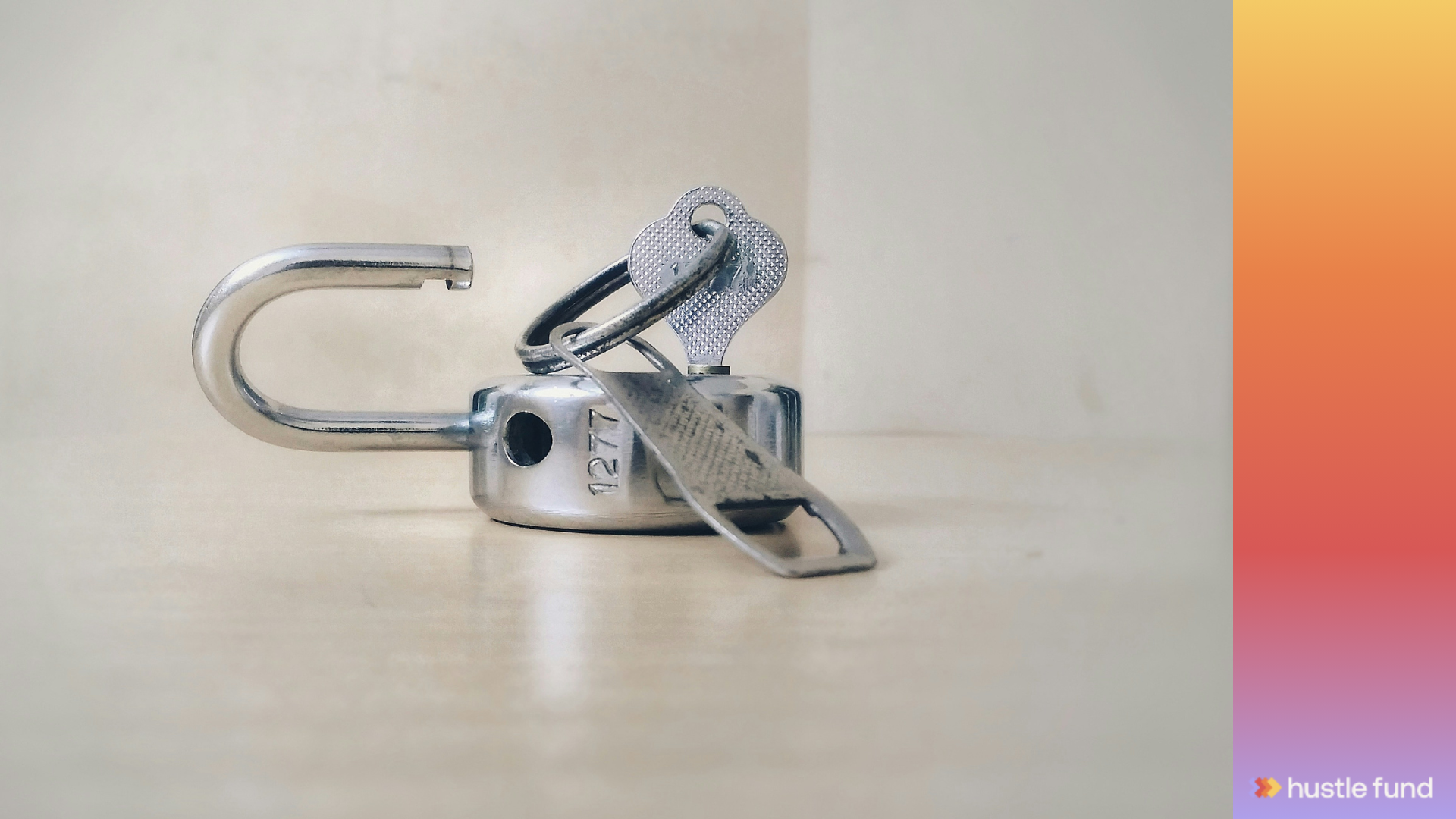Investor Updates: The One Thing Most Founders Skip (And Why That's a Huge Mistake)
.png)
Brian Nichols is the co-founder of Angel Squad, a community where you’ll learn how to angel invest and get a chance to invest as little as $1k into Hustle Fund's top performing early-stage startups.
Here's a question: when was the last time you sent your investors an update?
If you're like most founders, the answer is probably "uh... at the board meeting?" or "when I needed something?" or my personal favorite, "I've been meaning to..."
Look, I get it. You're busy. You're hiring, building product, talking to customers, putting out fires. The last thing on your mind is writing a monthly email to people who've already given you money.
But here's what I've learned: the founders who send regular updates are the ones who raise their next rounds faster, get better intros, and generally have investors who are way more helpful.
Investor updates are not optional if you want to win at this game.
Why Investor Updates Actually Matter
Let's start with the obvious: investors forget about you.
I'm serious. We invest in a lot of companies. Even the ones I'm super excited about can fade from my immediate consciousness if I don't hear from them for six months. It's not malicious. It's just human nature.
When you send monthly updates, you stay top of mind. When I see your name in my inbox every month, I'm thinking about your company. I'm wondering how I can help. I'm keeping an eye out for intros or partnerships or potential hires.
But it goes deeper than that. Updates create accountability. When you write down your goals publicly (even if "publicly" is just to 20 investors), you're way more likely to hit them. It's the same reason people post their gym progress on Instagram.
And here's the sneaky benefit nobody talks about: updates make fundraising way easier. When you're ready to raise your next round, you don't need to spend the first three meetings catching investors up on what you've been doing. They already know. They've been following along. They've seen the progress. They're already half-sold.
What Should Actually Go in an Update?
The anatomy of a good investor update is simpler than you think. You don't need a novel. You need clarity and honesty.
Start with a quick personal note. Just a sentence or two. This humanizes you and reminds investors that you're not a robot. "We just hired our first engineer and I'm pretty sure I forgot how to sleep" works fine.
Then hit the executive summary. This is where you put the most important stuff: major news (good or bad), top-line metrics, key wins, and critical challenges. Some investors will only read this section, so pack it with the good stuff.
After that, repitch your company in a sentence or two. Yes, really. Investors invest in a lot of companies. They forget what you do. Remind them.
Next comes your asks. This is where most founders undersell themselves. Don't just write "let me know if you can help." Be specific. "We're hiring a senior engineer with experience in real-time systems. Do you know anyone?" or "We're trying to get into Stripe's partner program. Any warm intros?" Specific asks get specific help.
Then share your goals and highlights. What did you set out to do last month? Did you hit it? What are you aiming for next month? This section shows investors that you're thoughtful about planning and execution.
Finally, end with thank yous. Shout out investors who helped you that month. People love seeing their names. Plus it trains them to read the whole update because they might be mentioned.
How Often Should You Send Updates?
Monthly. Full stop.
Not quarterly. Not "when something big happens." Monthly.
Why? Because monthly is frequent enough to build momentum but not so frequent that it feels like spam. It's a rhythm your investors can count on.
I've seen founders try quarterly updates. They always drift to every 4-5 months, and then every 6-7 months, and then they just stop. Monthly is the Goldilocks frequency.
Some founders ask if they should send updates if they don't have much to report. The answer is yes. Send it anyway. Even if it's just "we're heads down building, here's what we shipped, here are our updated metrics." Consistency matters more than having blockbuster news every single month.

Who Should Get Your Updates?
This is simpler than you think: anyone who's invested in your company, plus anyone who seriously considered investing but passed.
That second group might surprise you, but it's critical. Investors who passed on your seed round are perfect targets for your Series A. By keeping them in the loop, you're warming them up for the next round. Many of our best investments at Hustle Fund came from companies we passed on initially but watched via updates.
Also include key advisors, early supporters, and anyone who's been exceptionally helpful. These people are part of your extended investor network whether they wrote a check or not.

The Mechanics: How to Actually Write Them
Here's my process (and I've written hundreds of these at this point):
Block 90 minutes on your calendar at the end of each month. Same day every month. Make it a recurring calendar event. This is investor update time.
Pull your key metrics. Whatever you're tracking (MRR, users, whatever), grab the numbers for the month.
Review your goals from last month. Did you hit them? Why or why not?
Think about what help you need. Be specific and prioritize your top 2-3 asks.
Now just write it. Don't overthink it. You're writing an email to people who want you to succeed, not crafting a Pulitzer-worthy essay.
Once you've got a template that works, copy it every month and just fill in the new numbers. I'm not kidding. Good updates follow a formula. Use the same structure every time.
One more thing: BCC your investors. Don't CC them. Nobody wants to accidentally reply-all to your entire cap table. Trust me on this one.
What Makes an Update Actually Good?
Good updates are honest. If you're struggling, say so. If you missed goals, own it and explain what you learned. Investors aren't expecting perfection. We're expecting honesty and self-awareness.
Good updates are concise. Aim for 300-500 words. If an investor wants more detail, they'll reach out. Most of them are just scanning for the headline anyway.
Good updates are consistent. Same format every month. This trains your investors to read quickly because they know where to find the information they care about.
And good updates have clear asks. Vague "let me know if you can help" doesn't work. Specific "I need an intro to Shopify's partnership team" works.
Common Mistakes to Avoid
Don't bury the lede. Put your most important update in the first two sentences. Investors are busy. If they have to scroll to find out you landed a huge customer, you're doing it wrong.
Don't sugarcoat bad news. If revenue is flat, say it's flat. Explain why and what you're doing about it. Investors can smell spin from a mile away.
Don't forget to actually send them. I know this sounds obvious, but founders skip months all the time. Set a recurring reminder. Make it automatic.
And don't make investors work to help you. If you want an intro, tell them who you want to meet and why. Don't make them guess.
Real Talk: The ROI
Let's do some napkin math. A good investor update takes maybe an hour to write. You send one per month. That's 12 hours per year.
In exchange, you get investors who are more engaged, more helpful, and more likely to fund your next round. You get better intros, faster. You get accountability that helps you hit your goals. You get a forcing function to reflect on what's working and what's not.
12 hours per year for all that? That's a steal.
If you're not sending monthly investor updates, start this month. Use the template I outlined above. Send it to everyone on your cap table plus anyone who seriously considered investing. Make it a habit.
And if you want to connect with investors who actually read updates and engage with founders, check out Angel Squad. We're building a community of founders and investors who believe in transparency, regular communication, and actually being helpful.
Your investors want to hear from you. So write them.













